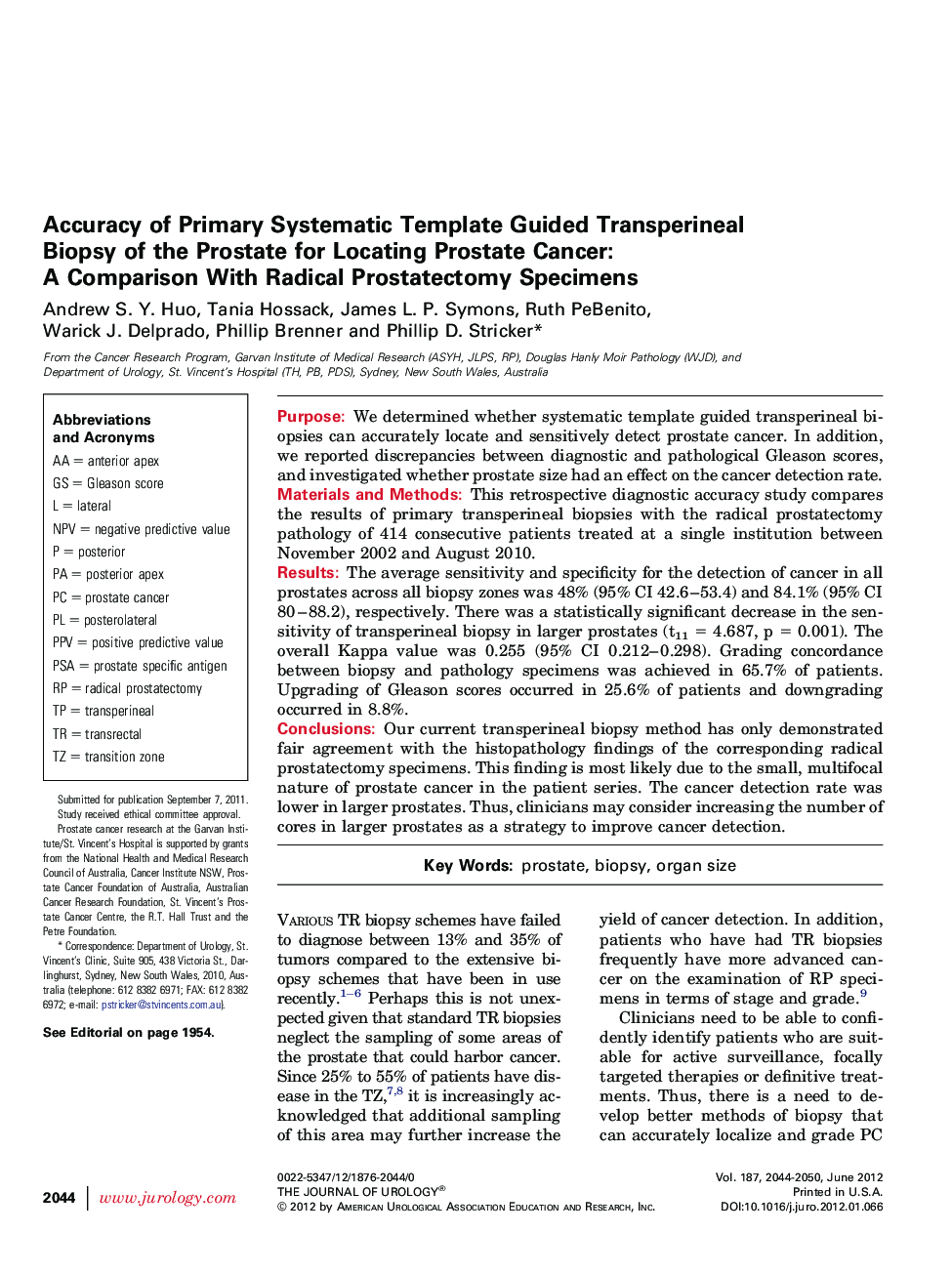| Article ID | Journal | Published Year | Pages | File Type |
|---|---|---|---|---|
| 3867764 | The Journal of Urology | 2012 | 7 Pages |
PurposeWe determined whether systematic template guided transperineal biopsies can accurately locate and sensitively detect prostate cancer. In addition, we reported discrepancies between diagnostic and pathological Gleason scores, and investigated whether prostate size had an effect on the cancer detection rate.Materials and MethodsThis retrospective diagnostic accuracy study compares the results of primary transperineal biopsies with the radical prostatectomy pathology of 414 consecutive patients treated at a single institution between November 2002 and August 2010.ResultsThe average sensitivity and specificity for the detection of cancer in all prostates across all biopsy zones was 48% (95% CI 42.6–53.4) and 84.1% (95% CI 80–88.2), respectively. There was a statistically significant decrease in the sensitivity of transperineal biopsy in larger prostates (t11 = 4.687, p = 0.001). The overall Kappa value was 0.255 (95% CI 0.212–0.298). Grading concordance between biopsy and pathology specimens was achieved in 65.7% of patients. Upgrading of Gleason scores occurred in 25.6% of patients and downgrading occurred in 8.8%.ConclusionsOur current transperineal biopsy method has only demonstrated fair agreement with the histopathology findings of the corresponding radical prostatectomy specimens. This finding is most likely due to the small, multifocal nature of prostate cancer in the patient series. The cancer detection rate was lower in larger prostates. Thus, clinicians may consider increasing the number of cores in larger prostates as a strategy to improve cancer detection.
